Harishyam Arts Blog
How to Choose Between Carved and Minimalistic Wooden Mandirs
By Lakshay Sharma | On 21 November, 2025 | Views

A home mandir (temple) is far more than just a piece of furniture; it is the spiritual heart of your home, a sanctuary of peace, devotion, and positive energy. Choosing the right mandir involves a harmonious blend of spiritual needs, personal aesthetics, and practical considerations.
At Harishyam Arts, with our roots deeply embedded in the rich artistic landscape of Rural Rajasthan, we specialize in crafting both intricately carved traditional wooden mandirs and sleek minimalistic modern designs, each handcrafted with devotion and premium wood.
This comprehensive guide is designed to help you navigate the beautiful dilemma: should you choose the timeless grandeur of a carved mandir or the contemporary elegance of a minimalistic one?
The Timeless Allure of the Carved Wooden Mandir
Carved wooden mandirs are a celebration of India's rich cultural heritage and ancient architectural traditions. Inspired by temple architecture styles like Nagara and Dravida, these mandirs are masterpieces of artistry and devotion.

The Aesthetic Grandeur
The primary draw of a carved mandir is its sheer visual appeal and ability to become an instant focal point in any room.
-
Intricate Details: Skilled artisans breathe life into wood, creating elaborate carvings of deities, floral motifs, geometric patterns, traditional domes (shikharas), and sturdy pillars. These details reflect the artisan's skill and add a layer of authenticity and deep cultural connection to your sacred space.
-
Warmth and Tradition: Typically crafted from rich, dark woods like Teak (Sagwan) or Sheesham (Indian Rosewood), these mandirs exude warmth, tradition, and a sense of history. They perfectly complement homes with ethnic, classic, or heavily decorated interiors.
-
A Symbol of Heritage: Owning a carved mandir is often about preserving a family's spiritual journey and traditions, with the potential to become a cherished heirloom passed down through generations.
Practical Considerations
-
Space Requirements: Carved mandirs are often larger floor-standing units and require a dedicated space or a separate pooja room to showcase their grandeur without overwhelming the surroundings.
-
Maintenance: The intricate carvings and detailed surfaces mean a little more effort in maintenance. Regular dusting with a soft, dry cloth is essential, and occasional polishing with natural oils (like coconut or olive oil) helps maintain their luster and prevent dirt accumulation.
-
Investment: Due to the extensive manual labor, specialized skills, and premium materials involved, these are generally a higher, but timeless, investment.
The Sleek Charm of the Minimalistic Wooden Mandir
In contrast to the opulence of traditional designs, minimalistic mandirs are a response to modern living, characterized by clean lines, simplicity, and functionality. They blend traditional spirituality with a contemporary design sensibility, making them ideal for the urban home.

The Modern Aesthetic
Minimalistic mandirs are a testament to the idea that a sacred space does not need elaborate ornamentation to be divine.
-
Clean Lines & Simplicity: These designs focus on essential forms, smooth finishes, and minimal detailing, offering a clutter-free and calm atmosphere that promotes focus during prayer and meditation.
-
Space Optimization: Ideal for compact apartments or limited spaces, minimalistic mandirs are often wall-mounted or designed as sleek corner units. This space-saving design ensures that even a small apartment can have a beautiful, dedicated place of worship without compromising on floor space.
-
Versatility in Finishes: They can feature natural wood polishes that highlight the grain, or be finished in neutral tones (white, beige) to match modern home décor. Modern elements like LED backlighting or glass panels are often incorporated to enhance the serene ambiance.
Practical Considerations
-
Ease of Maintenance: The smooth, simple surfaces of minimalistic mandirs are very easy to clean. A quick wipe with a damp cloth is often enough to keep them pristine, a major advantage for busy urban lifestyles.
-
Functionality: Many modern designs integrate smart storage solutions, such as hidden drawers or cabinets, to keep all puja essentials organized and out of sight, promoting a clean environment that is auspicious for positive energy.
-
Budget-Friendly Options: While premium materials are still available, the simpler designs and use of materials like high-quality MDF or mango wood can offer more budget-friendly options.
Harishyam Arts: Customization to Fit Your Vision
At Harishyam Arts, we understand that every home and every individual's spiritual journey is unique. This is why we offer extensive mandir customization option, allowing you to design a mandir that perfectly aligns with your preferences and space requirements.
Whether you envision a grand, custom-carved temple with specific deity motifs or a sleek, wall-mounted wooden temple that blends seamlessly into your modern living room, our skilled artisans can bring your vision to life. We use only the best woods, such as durable teak and auspicious sheesham, ensuring your mandir is not only beautiful but also long-lasting and Vastu compliant.
Conclusion: Finding Your Perfect Sanctuary
The choice between a carved and a minimalistic wooden mandir ultimately depends on creating a space that resonates with your personal style and spiritual needs.
-
Choose a carved mandir if you value tradition, elaborate artistry, have ample space, and want a timeless centerpiece for your home.
-
Opt for a minimalistic mandir if you have a modern interior, limited space, prefer easy maintenance, and appreciate clean, functional design.
No matter your choice, a wooden mandir from Harishyam Arts is a beautiful investment in peace, positive energy, and exquisite craftsmanship. Explore our collection of mandir for home today and embark on the journey of bringing home a sacred space that is truly, uniquely yours.
Frequently Asked Questions (FAQs)
Q1. What types of wood do you use for your mandirs?
Ans: At Harishyam Arts, we primarily use premium, durable woods such as Teak (Sagwan) and Sheesham (Indian Rosewood). These woods are renowned for their longevity, auspiciousness (as per Vastu Shastra), natural beauty, and resistance to decay, ensuring your mandir lasts for generations.
Q2. Are your mandirs Vastu compliant?
Ans: Yes, all our mandir designs can be tailored to meet Vastu Shastra principles. Key considerations include the mandir's placement (ideally facing East or North-East), height from the floor, and specific design elements to promote positive energy flow in your home. Our team can guide you through these requirements during the design process.
Q3. Do you offer customization for specific sizes or designs?
Ans: Absolutely. Customization is one of our specialties. Whether you need a specific size to fit a unique corner, want to incorporate specific deity motifs into a carved design, or adjust the finish of a minimalistic unit, our skilled artisans can bring your vision to life.
Q4. How do I maintain a heavily carved mandir?
Ans: For maintenance of carved mandirs, regular dusting with a soft, dry cloth or a soft brush attachment on a vacuum cleaner is recommended to prevent dust accumulation in the intricate details. For maintaining the wood's luster, we suggest using a natural wood polish or a simple cloth lightly dampened with a natural oil (like linseed oil) every few months. Avoid harsh chemical cleaners.
Q5. What is the typical delivery time for a custom-made mandir?
Ans: The delivery time for custom mandirs varies depending on the complexity of the design and the level of customization required. Generally, it can take anywhere from 3 to 6 weeks. We will provide you with a detailed timeline during the order confirmation process.
A home mandir (temple) is far more than just a piece of furniture; it is the spiritual heart of your home, a sanctuary of peace, devotion, and positive energy. Choosing the right mandir involves a harmonious blend of spiritual needs, personal aesthetics, and practical considerations.
At Harishyam Arts,...

Lakshay Sharma
I’m Lakshay Sharma, a writer with a deep passion for Hindu mythology, Vastu Shastra, and home interiors. I enjoy exploring the rich traditions of Hindu gods and goddesses, sharing insights into Vastu principles, and offering guidance on creating sacred spaces like Puja Mandirs. Through my writing, I aim to inspire harmony and spiritual well-being, blending traditional knowledge with modern perspectives.
Harishyam Arts | Jaipur
Related Blogs

Who is Parashvanath? The Life and Legacy of Jainism’s 23rd Tirthankara
Lakshay Sharma | November 22, 2025
Faith and spirituality are cornerstones of Indian tradition, and Jainism stand...
Read More...
How to Choose Between Carved and Minimalistic Wooden Mandirs
Lakshay Sharma | November 21, 2025
A home mandir (temple) is far more than just a piece of furniture; it is the s...
Read More...
How to clean silver god idols at home
Lakshay Sharma | November 21, 2025
At Harishyam Arts, we understand the spiritual and aesthetic significance of s...
Read More...
Are Marble Dust Statues Ideal for Your Home Temple? Pros & Cons
Lakshay Sharma | November 19, 2025
When it comes to selecting statues for your home temple, marble dust statues h...
Read More...
Where to Buy Authentic Marble Gods' Moortis in the USA: A Guide for Devotees and Collectors
Lakshay Sharma | November 19, 2025
For devotees and collectors in the USA seeking authentic marble Hindu god moor...
Read More...
Maa Parvati 108 Names in Sanskrit and English: Their Significance, Meaning, and Mantra Power
Lakshay Sharma | November 17, 2025
The Divine Essence of Maa Parvati
Maa Parvati,...
Read More...
8 Guidelines for Setting Up Your Home Mandir with Wooden Murtis: Location, Selection, and Maintenance.
Lakshay Sharma | November 16, 2025
Introduction: The Divine Mother of Strength and Compassion

Who Was Jain Mahavir? The Life, Teachings, and Legacy of the 24th Tirthankara
Lakshay Sharma | November 15, 2025
Lord Mahavir, the 24th Tirthankara of Jainism, was a spiritual reformer who re...
Read More...
Benefits of Choosing Corian Mandirs Over Marble and Wood
Lakshay Sharma | November 14, 2025
Modern homes today demand elegance, functionality, and easy upkeep — and Coria...
Read More...
White vs. Black Shivling: Which One Is Best for Your Home and Why?
Lakshay Sharma | November 13, 2025
The Shivling, a sacred symbol of Lord Shiva, embodies creation, power, and pur...
Read More...
10 Stunning Marble Handicraft Pieces to Elevate Your Home Décor
Lakshay Sharma | November 12, 2025
Marble handicrafts represent timeless artistry, luxury, and devotion. At Haris...
Read More...
Brass Ganesha Idols as Gifts: Symbolism, Occasions, and Gifting Etiquette
Lakshay Sharma | November 11, 2025
Gifting a brass Ganesha idol is more than a gesture—it's a blessing of prosper...
Read More...
Luxury Kids Room Decor Ideas That Turn Every Space Into a Fairytale Dream
Lakshay Sharma | November 10, 2025
Transforming a child’s room into a luxury fairytale dream combines comfort wit...
Read More...
Why Repainting Your Marble Statue Can Extend Its Life and Beauty
Lakshay Sharma | November 09, 2025
Marble statues are elegant pieces of art that add charm to any home or temple....
Read More...
How to Choose the Perfect Wall-Mounted Wooden Mandir for Your Home
Lakshay Sharma | November 08, 2025
A wall-mounted wooden mandir is more than just a spiritual corner; it’s a blen...
Read More...
Understanding GST on Marble God Statues: A Complete Guide for Buyers and Sellers
Lakshay Sharma | November 07, 2025
Marble god statues are a popular choice for temples, homes, and offices due to...
Read More...
Are Wooden Statues Pest-Resistant? How to Protect Your Wooden Idols from Insects and Damage
Lakshay Sharma | November 06, 2025
Wooden statues have been cherished for centuries due to their natural beauty a...
Read More...
Corian vs Wooden Temples: Which One Should You Choose?
Lakshay Sharma | November 05, 2025
Choosing the perfect temple for your home is more than just selecting a design...
Read More...
How Customised Marble Human Bust Manufacturers Bring Personalities to Life
Lakshay Sharma | November 04, 2025
Crafting a marble human bust is so much more than sculpting a likeness—it's ab...
Read More...
The Power of the Hare Krishna Maha Mantra: Awakening Spiritual Bliss
Lakshay Sharma | November 03, 2025
The Hare Krishna Maha Mantra is a sacred chant that ...
Read More...
The 24 Tirthankaras of Jainism: Names, Symbols, and Significance
Lakshay Sharma | November 02, 2025
In Jainism, the Tirthankaras are revered as divine s...
Read More...
Top 25 Space-Saving Wooden Mandir Ideas for Modern Homes
Lakshay Sharma | November 01, 2025
A pooja mandir is the heart of every Indian home — a sacred corner where peace...
Read More...
What Are the 8 Forms of Lakshmi? | Ashta Lakshmi Meaning and Significance
Lakshay Sharma | October 31, 2025
The Divine Essence of Goddess Lakshmi
Goddess La...
Read More...
The Art of Craftsmanship: How Handmade Brass Statues Are Created
Lakshay Sharma | October 30, 2025
At Harishyam Arts, we celebrate the timeless beauty ...
Read More...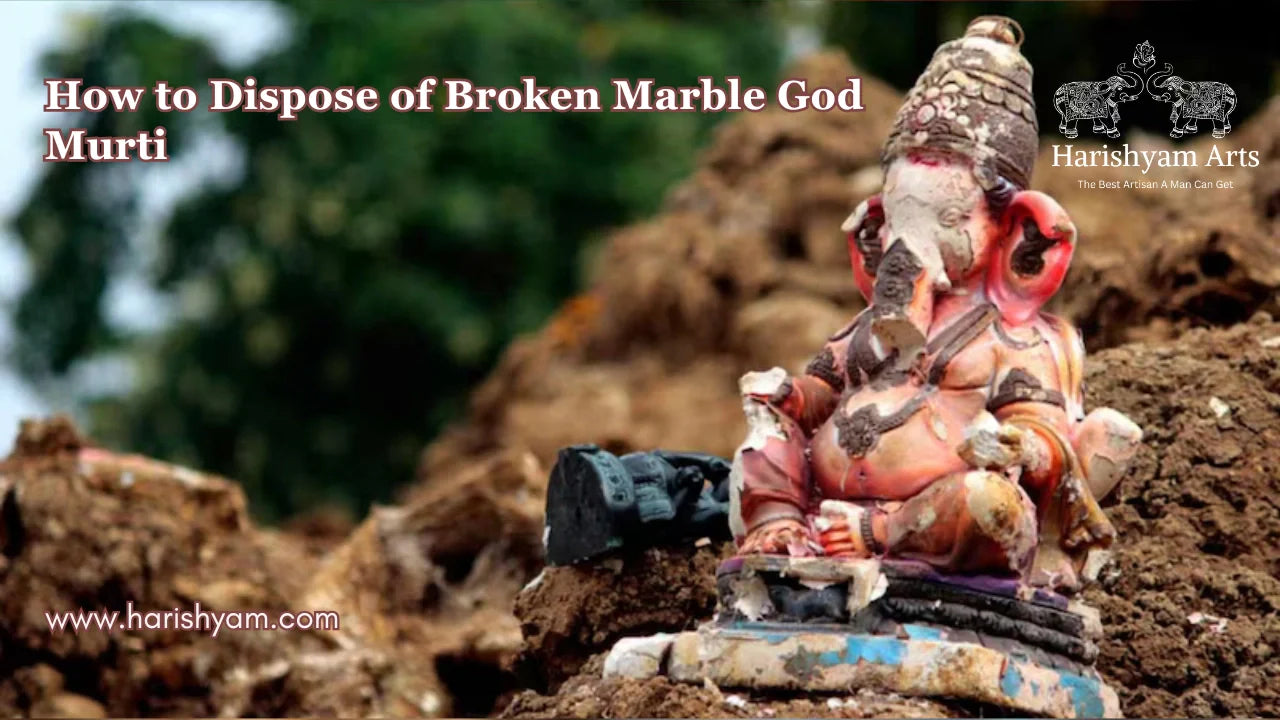
How to Dispose of Broken Marble God Murti
Lakshay Sharma | October 30, 2025
In Hindu tradition, marble murtis represent divine presence and spiritual ener...
Read More...
Wooden Statues vs Marble Statues: Which One Should You Choose?
Lakshay Sharma | October 29, 2025
When it comes to decorating your home or creating a sacred space, choosing the...
Read More...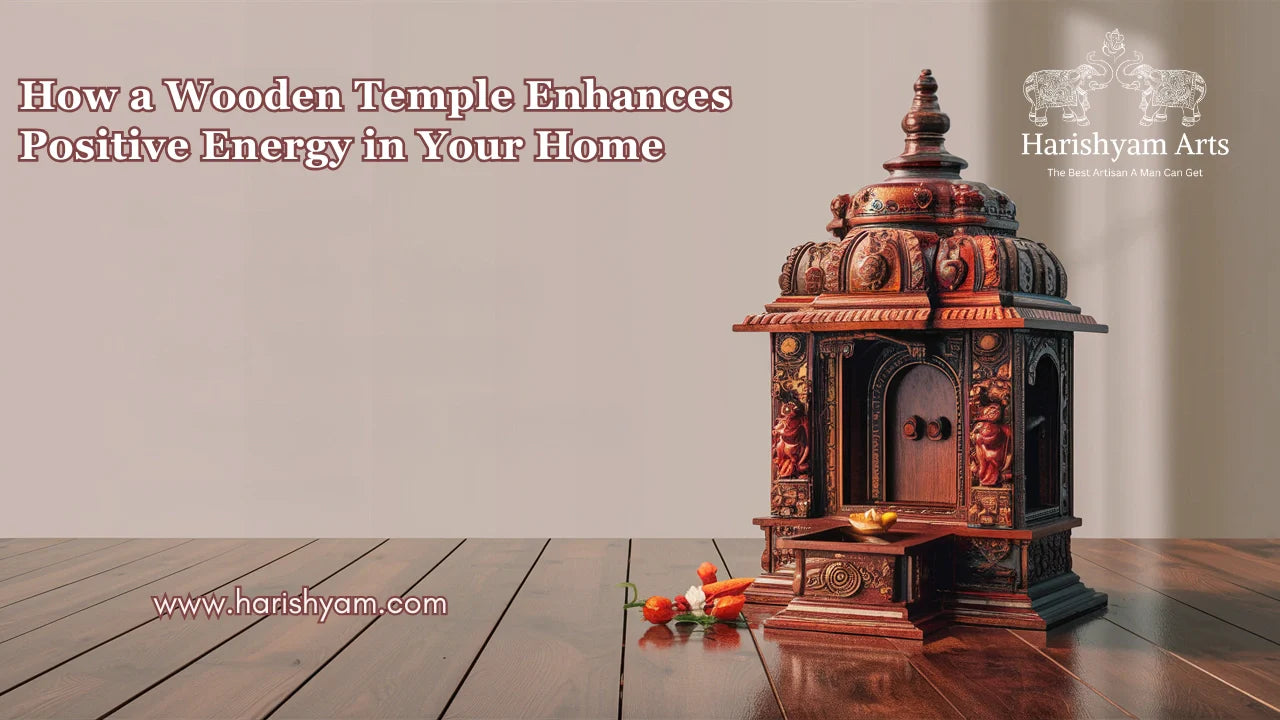
How a Wooden Temple Enhances Positive Energy in Your Home
Lakshay Sharma | October 28, 2025
A home temple isn’t just a decorative corner — it’s the spiritual...
Read More...
Why Lord Krishna is Worshipped in Different Forms Across India
Lakshay Sharma | October 27, 2025
Lord Krishna — the eighth incarnation of Lord Vishnu — is one of the most belo...
Read More...
The Story of Goddess Saraswati: The Embodiment of Wisdom and Knowledge
Lakshay Sharma | October 26, 2025
Among the many deities of the Hindu pantheon, Maa Saraswati Read More...

Top Reasons to Choose Brass Statues for Home Décor and Spiritual Spaces
Lakshay Sharma | October 25, 2025
Home décor today is not only about beauty—it’s about creating a peaceful and m...
Read More...
How long do Corian temples last?
Lakshay Sharma | October 24, 2025
Choosing the right material for a temple at home is important for both aesthet...
Read More...
Why Lord Shiva is Called the Mahadeva – The Supreme God
Lakshay Sharma | October 23, 2025
Hinduism, one of the world’s oldest religions, has a rich pantheon of deities,...
Read More...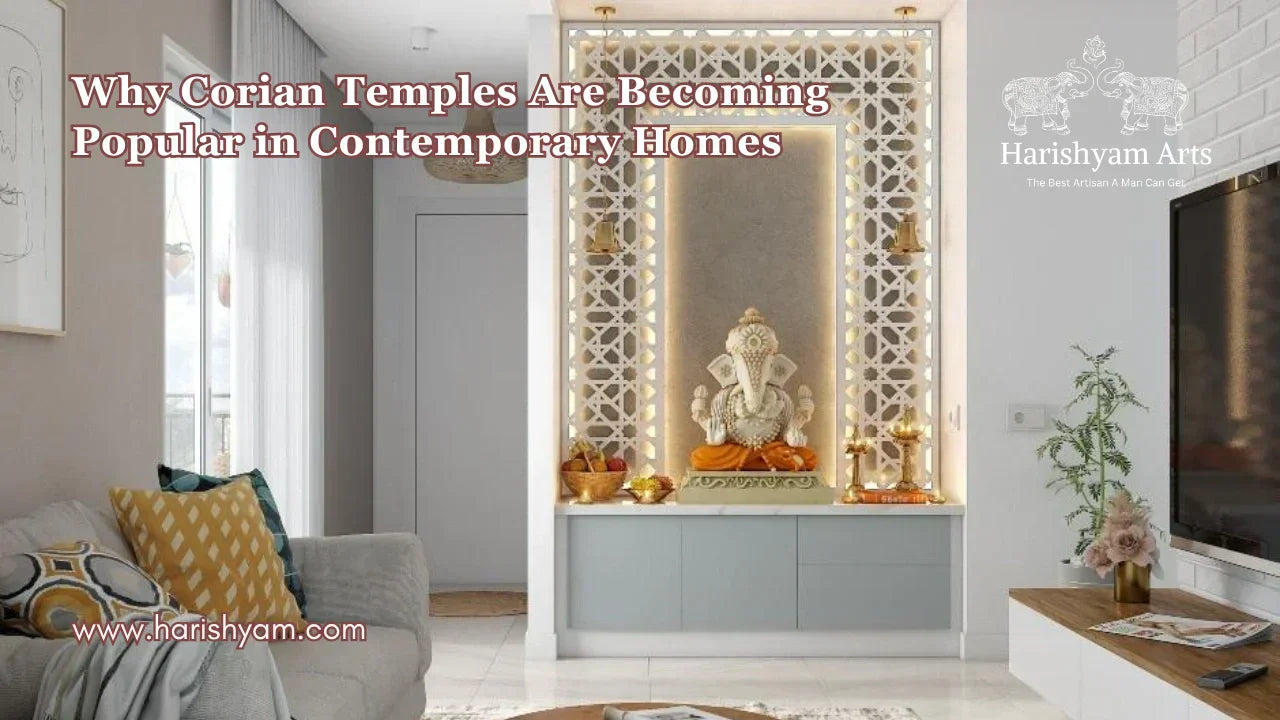
Why Corian Temples Are Becoming Popular in Contemporary Homes
Lakshay Sharma | October 22, 2025
In today’s modern homes, interior décor blends tradition with contemporary sty...
Read More...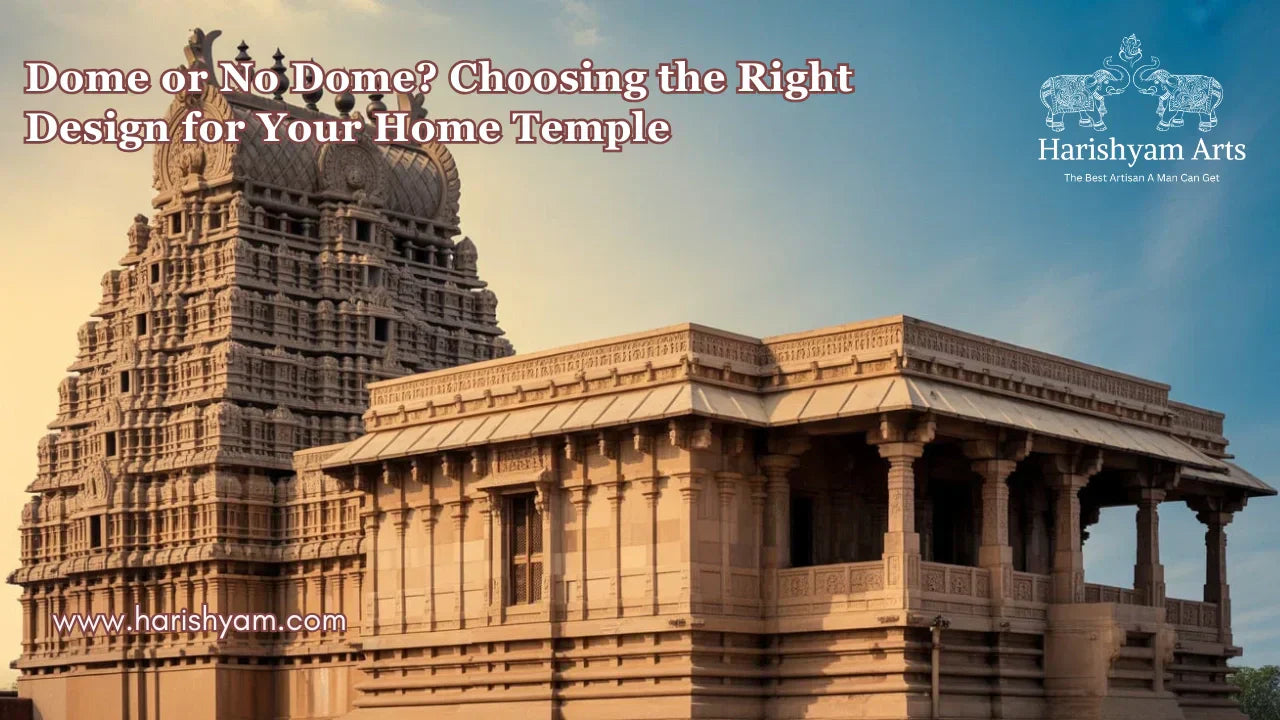
Dome or No Dome? Choosing the Right Design for Your Home Temple
Lakshay Sharma | October 21, 2025
Creating a sacred space at home is a spiritual investment, and the design of y...
Read More...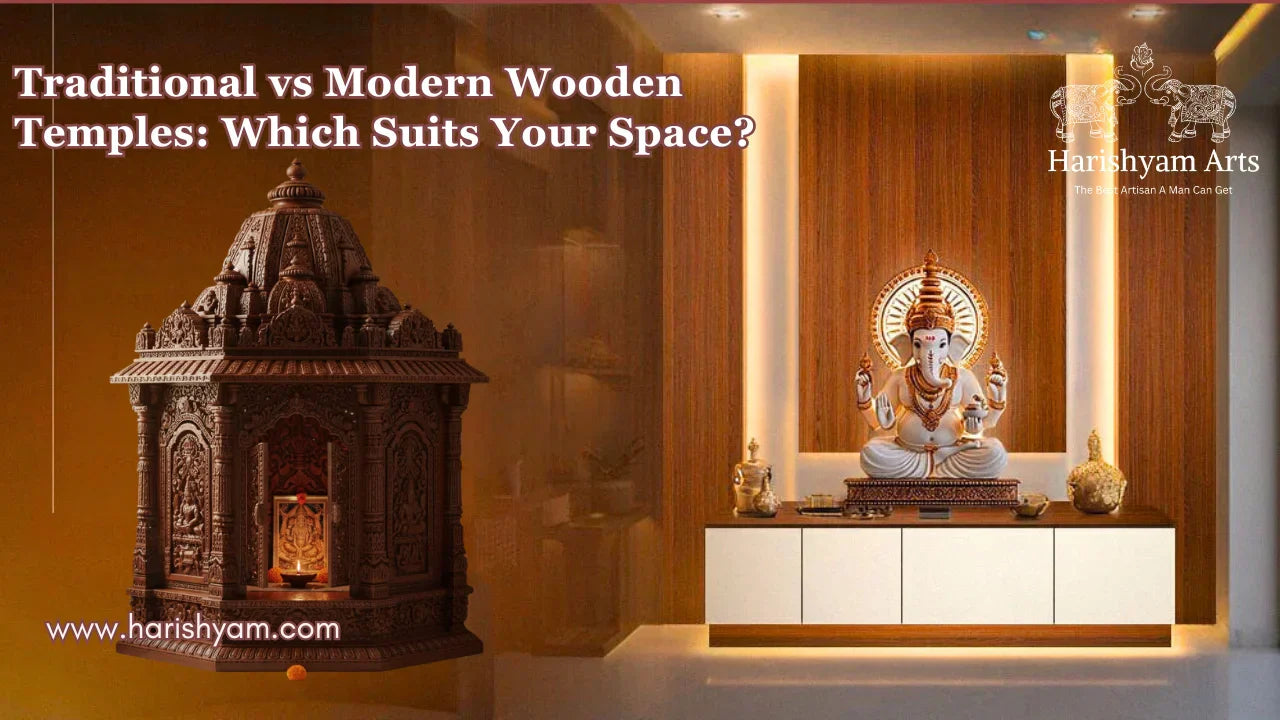
Traditional vs Modern Wooden Temples: Which Suits Your Space?
Lakshay Sharma | October 20, 2025
Creating a sacred space in your home is more than just interior décor — it’s a...
Read More...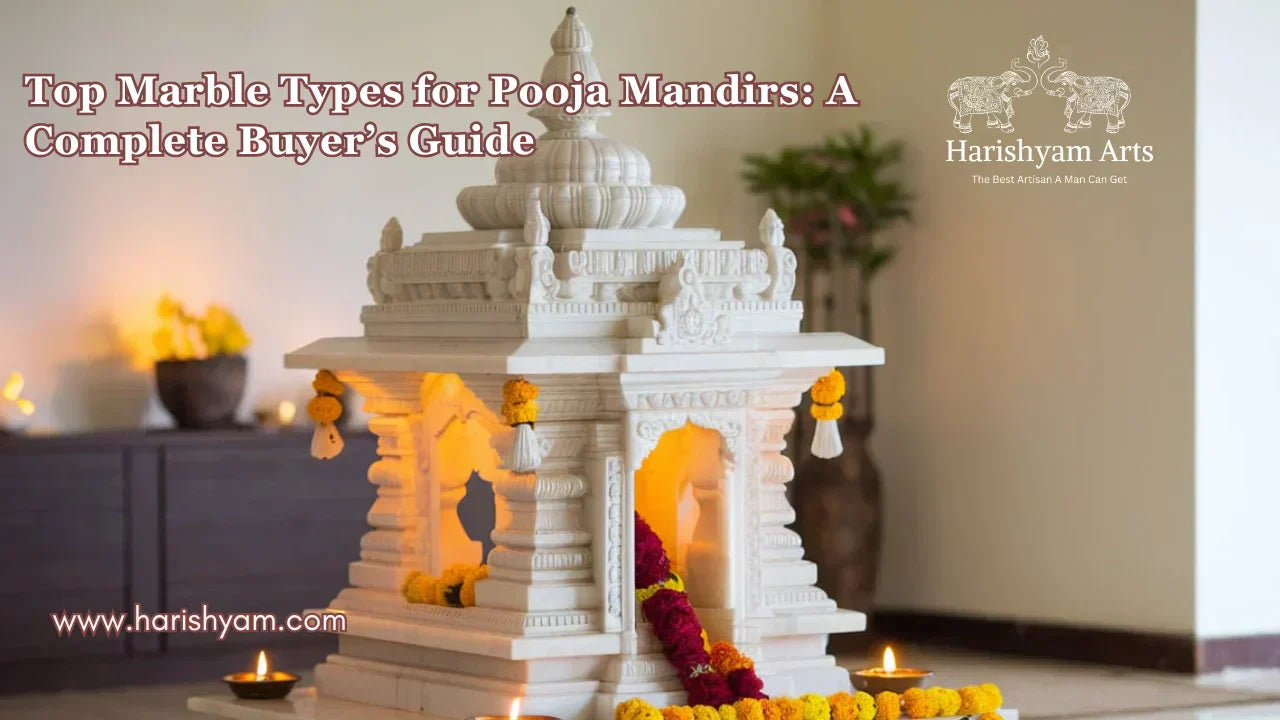
Top Marble Types for Pooja Mandirs: A Complete Buyer’s Guide
Lakshay Sharma | October 19, 2025
A Pooja Mandir is more than just furniture; it is th...
Read More...
The Different Forms of Shiva Statues and their Symbolism
Lakshay Sharma | October 18, 2025
Introduction to the God Shiva Statue
Lord Shiv...
Read More...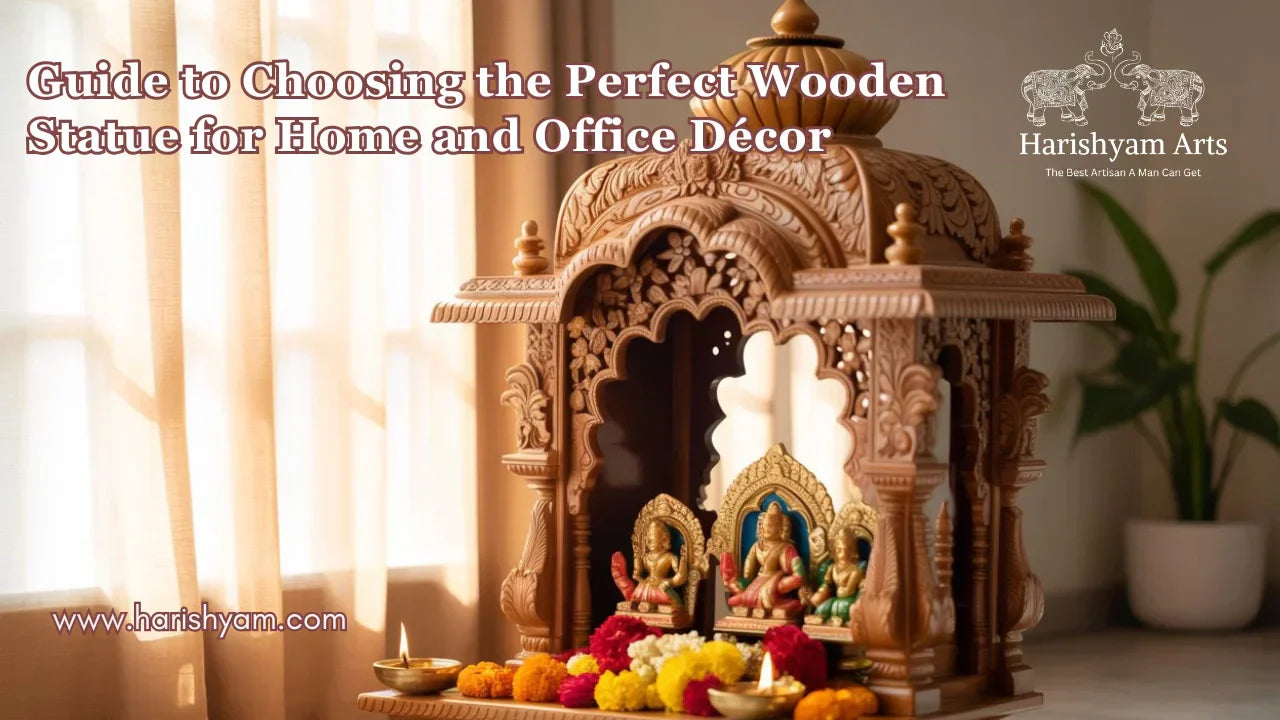
Guide to Choosing the Perfect Wooden Statue for Home and Office Décor
Lakshay Sharma | October 17, 2025
Wooden statues are more than decorative pieces—they are timeless symbols of ar...
Read More...
Understanding the Difference Between Handmade and Machine-Made Brass Statues
Lakshay Sharma | October 16, 2025
Brass statues have been a cornerstone of spiritual and decorative art for cent...
Read More...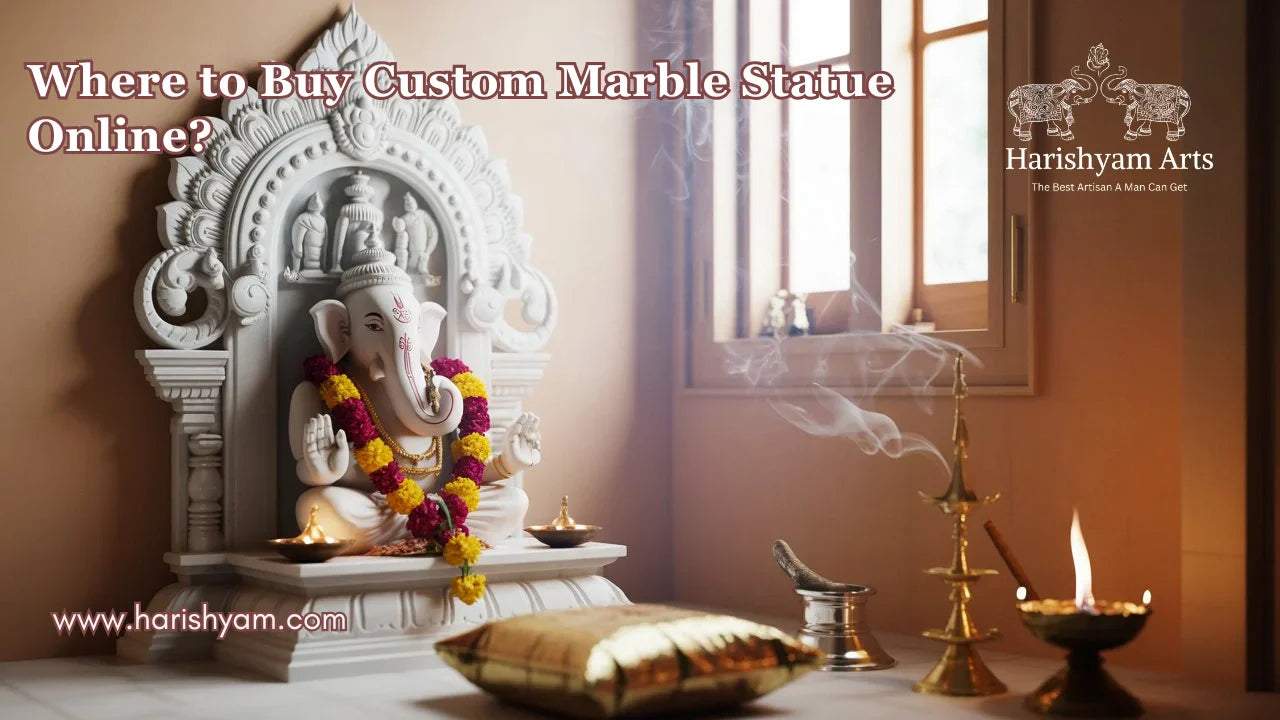
Where to Buy Custom Marble Statue Online? A Complete Guide
Lakshay Sharma | October 15, 2025
Marble statues have always held a special place in Indian homes and temples. T...
Read More...
Mistakes You Shouldn’t Make When Purchasing a Home Temple Online
Lakshay Sharma | October 14, 2025
Buying a home temple online can be an exciting experience — especially with so...
Read More...
Mistakes You Shouldn’t Make When Purchasing a Home Temple Online
Lakshay Sharma | October 14, 2025
Buying a home temple online can be an exciting experience — especially with so...
Read More...
How to Clean and Maintain Wooden Statues at Home
Lakshay Sharma | October 13, 2025
Wooden statues add elegance, tradition, and warmth to any home. From intricate...
Read More...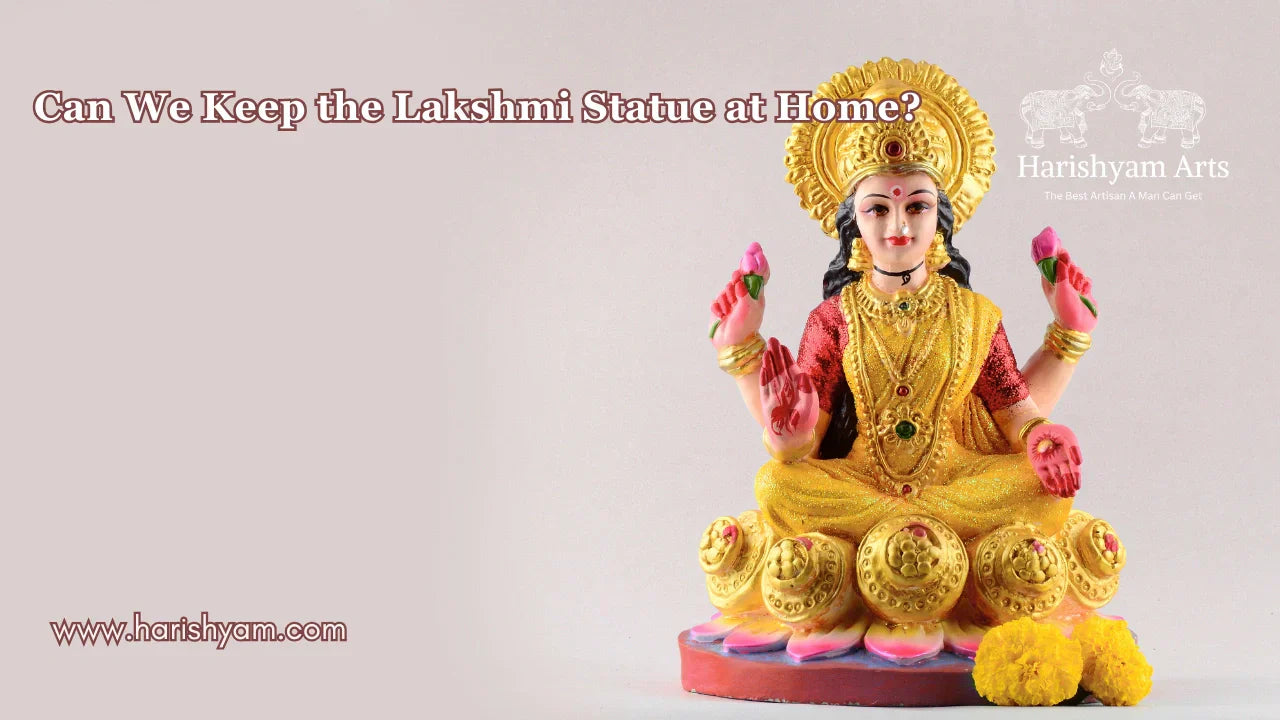
Can We Keep the Lakshmi Statue at Home?
Lakshay Sharma | October 13, 2025
In Hindu tradition, Goddess Lakshmi is worshipped as the divine force of wealt...
Read More...
How to Clean Brass Statues at Home?
Lakshay Sharma | October 12, 2025
Brass statues add a touch of elegance and spirituality to any home. At Harishy...
Read More...
Which Lakshmi Idol is Good for Home? Types, Materials, and Significance
Lakshay Sharma | October 11, 2025
Goddess Lakshmi, the divine symbol of wealth, prosperity, and abu...
Read More...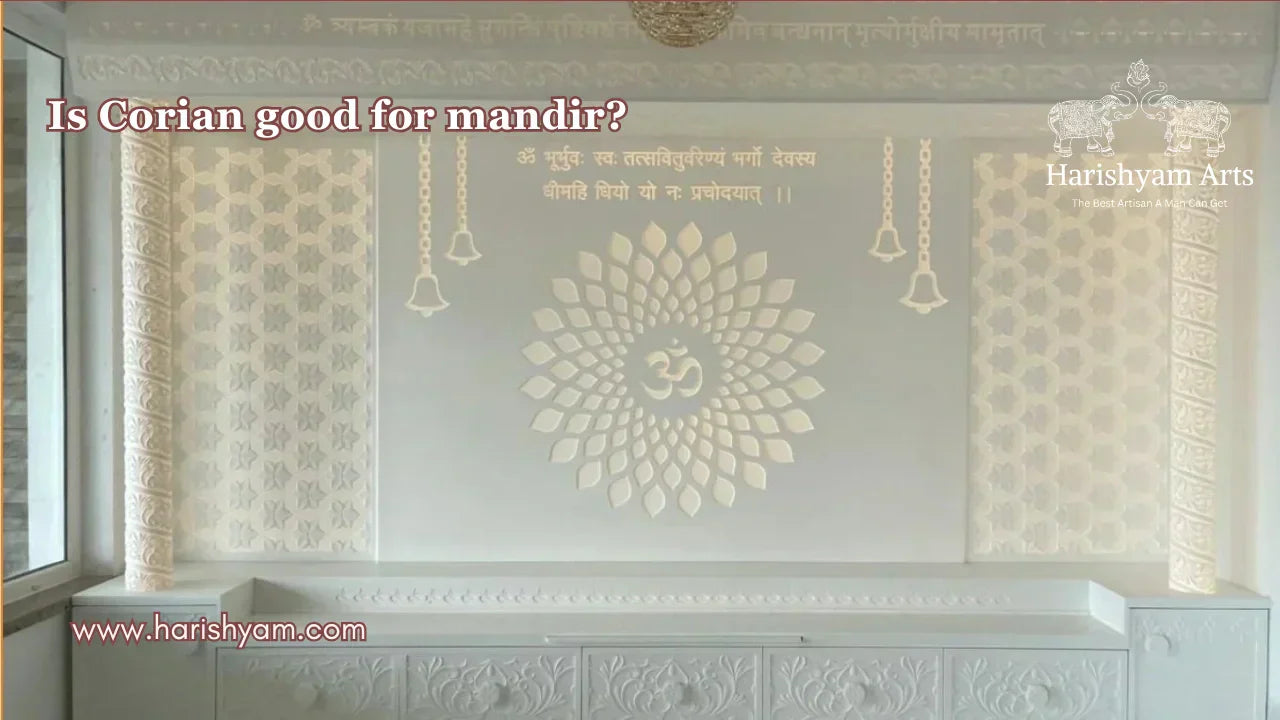
Is Corian Good for Mandir? A Complete Guide
Lakshay Sharma | October 10, 2025
When it comes to designing a home mandir, choosing t...
Read More...
Different Types of Buddha Statues and Their Meanings
Lakshay Sharma | October 09, 2025
Buddha statues are more than just beautiful decorative pieces—they symbolize s...
Read More...
How to Identify a Real Habur Stone? A Complete Guide
Lakshay Sharma | October 08, 2025
Habur stone, known for its mysterious ability to turn milk into curd naturally...
Read More...
How long does Marble Statues Last?
Lakshay Sharma | October 06, 2025
Marble statues can last for centuries, or even thousands of years...
Read More...



